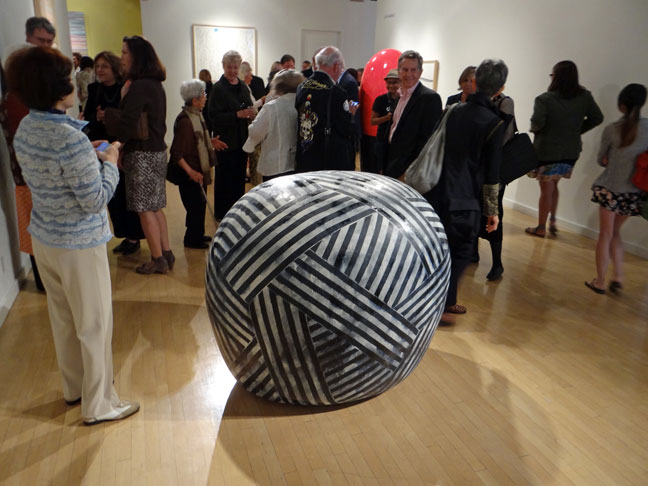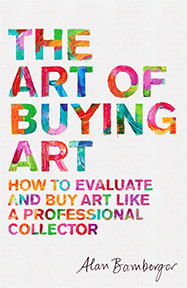Reproduction Print Sales Impact Artists in a Big Way
The commercialization of the art business is nowhere more evident than in the marketing of reproduction prints, particularly giclees (computer prints of digital files) by businesses presenting themselves as fine art publishing companies, websites, and galleries. Add to the mix that these days, many artists also publish and sell digital prints of their art. These reproductions are many times presented as signed and numbered "limited edition" or "fine art" prints, and can sell for hundreds or occasionally even thousands of dollars. The great majority, however, are nothing more than digital reproductions or copies of scans or photographs of paintings, watercolors, drawings, or works of art in other mediums (as opposed to original digital works of art created by digital artists either entirely or in large part on computers).
Now there's absolutely nothing wrong with publishing, marketing, selling, and collecting giclee or digital reproductions as long as sellers properly represent what they're selling and buyers understand exactly what they're buying. Unless sellers provide adequate information, people who don't know or aren't sure what they're buying can think they're getting more than digital reproductions or copies of art. Unfortunately, some less-scrupulous sellers offer digital repro-prints for sale with no explanations whatsoever other than that they're signed or limited by the artists. Unless they're clearly told otherwise, some buyers can believe they're buying art, not computer printout copies of art. The truth is that artists whose works of art are reproduced as prints usually have little or nothing to do with the hands-on production of these editions; printing and publishing companies do that. The artists' only participation is typically to sign their names and number the prints which takes maybe thirty seconds or a minute or so per print, assuming they're signed or numbered at all.
The problem with how giclee prints are sometimes marketed is fourfold. First of all, many of these prints and giclees are sold in ways that confuse less sophisticated buyers. Second, some level of collectibility and/or investment potential may be implied by sellers, when in fact, these reproduction or giclee copies of works of art in other mediums are no different than decorative mass-market prints and posters. Third, the markup over production costs can sometimes be quite high with the bulk of the profits going to printing companies (aka fine art publishers) or to the galleries or websites that sell these prints rather than to the artists themselves. Fourth, it can be argued that every time someone buys one of these reproduction prints or giclees thinking they're buying original works of art that one less artist somewhere sells one less original artwork.
Even though reproduction print sales range well into the millions of dollars, artists do little to combat the misconceptions that sometimes characterize how these prints and giclees are marketed, and sometimes can even knowingly mislead potential buyers. Many simply don't care or have no interest pursuing the matter. Some may choose to ignore the problem out of elitism, while others decide to join on in and publish their own signed limited edition reproductions of their art. No matter what the excuse or rationalization, as long as websites and commercial print publishers continue to position their products in ways that make them seem like something more than digital reproductions-- in other words, like some kind of art-- they'll continue to maintain and likely even increase their market share while artists will continue to come out on the short end.
Another unfortunate aspect of the reproduction print business is that a percentage of collectors stop buying art altogether when they realize that the works they've been buying are not what they thought they were. The really bad news is that they can sometimes tell others to stay away from art as well. All art and all artists suffer every time this happens. Anyone who thinks they're buying original art, but later finds out they've bought something that only looks like original art will be really reluctant to ever approach artists or galleries again. That's a fact. In the meantime, "fine art" printers, giclee publishing companies, and the galleries and websites that sell their products roll on, as do their ever-mutating terminologies and confusing explanations about what exactly they're selling.
If you're a traditional printmaker or a digital artist who creates original digital art (not repros of art that already exist in other mediums), you might well consider getting involved and informed on this issue, and learn how to explain the difference between your originals (including original digital works of art) and signed limited edition reproductions of works of art in other mediums. Galleries that sell original art might get proactive on this matter as well and make concerted efforts to educate their clienteles about how to distinguish between original works of art and giclee or limited edition reproductions or copies of originals. As for you artists and your fans and followers, perhaps consider lobbying for better disclosure laws and establishing industry standards and guidelines for labeling, representing and selling limited edition prints of all kinds (some states like New York and California already have them). Criteria for labeling and describing reproduction limited edition copy prints should also be standardized, made easy to understand, and be required reading for potential buyers-- BEFORE they buy, not after.
No matter what type of prints you make or sell, do your best to inform and educate the public about the differences between originals and reproductions. Accurately describe them not only on your website and social media pages, but also in documentation that accompanies the works themselves. As for you collectors looking for the best in original limited edition prints like etchings, lithographs, screenprints, monotypes and more, from antique to contemporary, available from top national and international dealers, check out the International Fine Print Dealers Association website. These individuals and galleries are exceptionally knowledgeable and sell only the real deal, not reproductions or copies.

(ceramic art by Jun Kaneko)

Current Features
- How to Buy Art on Instagram and Facebook
More and more people are buying more and more art online all the time, not only from artist websites or online stores, but perhaps even more so, on social media ... - Collect Art Like a Pro
In order to collect art intelligently, you have to master two basic skills. The first is being able to... - San Francisco Art Galleries >>


